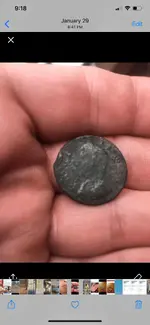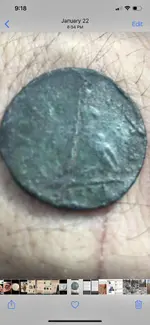The 1730 halfpenny was 28mm diameter and the farthing was 23mm. There were no George II pennies struck in copper… only tiny silver ‘Maundy’ pennies used principally for ceremonial purposes or given as ‘largesse’ to the deserving.
Our pound was divided into 20 shillings. A shilling was divided into 12 pennies. A halfpenny was, as it suggests, half a penny. A farthing (originally ‘fourthing’) was a quarter of a penny, so there 240 pennies to the pound (12 x 20), or 960 farthings to the pound (4 x 12 x 20). The denominations of pounds, shillings and pence were referred to as 'Lsd' (£sd), with the ‘L’ deriving from the Roman unit of weight ‘libra pondo’ and the ‘d’ deriving from the Roman ‘denarius’.
We moved to decimal coinage on 15 February 1971, with 100 New Pennies to the pound and ultimately dropped the word ‘New’. The new penny is denoted by a ‘p’ rather than the ‘d’ previously used for the 'old' penny. The smallest coin in the decimal system was a halfpenny (1/2 p), which was demonetised and withdrawn from circulation in December 1984 having been deemed too small to serve any useful purpose.


